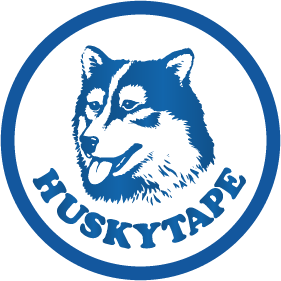About Husky Tape
- An Australian owned and established business that has operated for over 50 years in the industrial packaging and specialty tape market.
- Long established relationships with key overseas manufacturers, giving us exclusive access to recognised brands that are well entrenched and accepted by the end user market.
- In-house converting equipment and expertise that provides a unique point of sale in what is a competitive and often difficult market.
Converting Services
We offer the following services: cut to size slitting, die-cutting, laminating, rewinding, custom packaging & labelling, and indent & bulk ordering.
Visit our services page for more info.
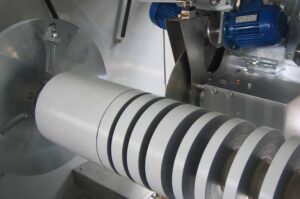
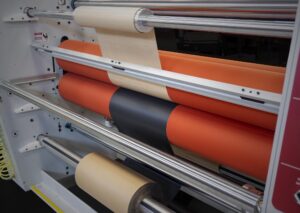
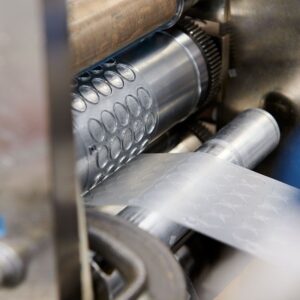
Understanding Adhesive Tapes
Adhesive Tapes Terms
- Adhesive Cohesion: The internal strength of the adhesive itself. How well the adhesive holds to resist shear stress and prevent splitting or tearing.
- Carrier: The backing that the adhesive is applied to. The material used will depend on the application and will vary from PP, PE, PVC, paper, cloth, etc.
- Coat Weight: The amount of adhesive coating applied to a backing and represented as grams per meter square (g/m²).
- Cold Flow : The tendency of the adhesive to behave like a viscous liquid over time. This can lead to oozing, potentially affecting adhesion and product quality problems.
- Dielectric Strength: The measure of the maximum voltage stress that a single layer of tape can withstand before dielectric failure occurs.
- Dimensional Stability: A tape’s ability to maintain its original shape and size, when applied to external influences like temperature, pressure, and moisture.
- Elongation : A tape’s ability to stretch before breaking, expressed as a percentage of the original length.
- Face Stock: Any material suitable for converting into a pressure sensitive adhesive. This can be paper, film, fabric, foil, laminate, etc.
- Fire Resistance: The ability of a tape to withstand exposure to flame. Fireproof materials will not burn even when exposed to flame. Flame-resistant (fire-retardant, self-extinguishing) materials will burn when exposed to flame, but will not sustain the burn after the flame is removed.
- Holding Power (Shear Resistance): A tape’s ability to hold a static weight vertically before falling.
- Impact Resistance : The tape’s ability to withstand or absorb shocks and vibrations.
- Insulation Resistance: The ability of the tape to prevent the flow of electrical current across its surface.
- Lap Joint: A common method used by lapping one material over another and using adhesive tape to provide the bond between them.
- Longitudinal: Refers to the direction in the tape’s length. Often used to describe reinforcement or other properties.
- Peel Adhesion: The force per unit width that is required to break the bond between the adhesive tape and the surface of which it has been applied.
- Pressure Sensitive Adhesive (PSA): An adhesive type that sticks when pressure is applied to achieve bond.
- Saturation: The process of impregnating the tape backing with materials to improve its durability and physical characteristics, such as resistance to moisture, solvents or chemicals.
- Shear Adhesion: The ability of a tape to resist static forces when applied parallel to the bonding surface.
- Surface Energy: A measure of how well an adhesive can adhere to a substrate. Surfaces with a high surface energy are easier to adhere to, while low surface energy substrates will require additional preparation to help achieve an affective bond.
- Transversal: Refers to the direction across the width of the tape. Often used to describe reinforcement or tear properties.
- Tack: The property of a pressure sensitive adhesive that allows it to adhere to a surface under very little pressure. Determined by the ability of the adhesive to wet quickly to the surface it contacts.
- Tear Resistance: A tape’s ability to resist tearing in any given direction after the tear has been initiated.
- Tensile Strength (Breaking Strength): The force required to break the tape by controlled pulling on either side. Measured in N/mm.
- Unwind Adhesion: Refers to the force required to remove tape from a roll under prescribed conditions. Important for reliable and smooth operation, specifically for machine operation or for when wide rolls are being dispensed by hand.
Backing/Carrier Types
What is an Adhesive Tape Backing / Carrier ?
The term backing or carrier are interchangeable and mean the same thing in this context. An adhesive tape backing is any material, whose composition varies depending on application, that carries an adhesive on one or both sides.
Material Types
There is an abundance of materials commonly used in the construction of adhesive tapes. These vary in material type, thickness and colour, depending on the application they are intended for. Here are some typical materials often used:
- Papers: Kraft, Silicone Coated, Flatback, Creped, Woven Tissue, Non-Woven Tissue, and Washi
- Cloths: Cotton, Rayon
- Films: Polyester (PET), Polypropylene (PP), Polyvinyl Chloride (PVC), Polyimide, Ultra-High Molecular Weight Polyethylene (UHMWPE)
- Foams: Open or Closed Cell – Polyurethane (PU), Polyvinyl Chloride (PVC), Polyethylene (PE), Nitrile Rubber (NBR)
- Foils: Aluminium, Copper
Adhesive Types
Choosing The Right Adhesive
The choice of adhesive used in tapes will alter many factors that are important when giving consideration as to which tape is right for the job. Here are some factors to consider when choosing the right adhesive for the job:
- Tack
- Shear adhesion
- Peel adhesion
- Operating temperature
- Resistance to environmental effects
- Permanent hold or temporary hold with residue free removal
- Curing time
Adhesive Types List
- Acrylic (Solvent Based) : Provides a medium to high initial tack but requires approx. 72 hours to achieve a 100% bond. Once achieved, they deliver a long-term bond that is ideal for external applications as they have excellent aging, weathering, temperature, chemical, and solvent resistance.
- Acrylic (Water Based): An economical grade adhesive that offers a good tack but is less resistant to moisture and heat.
- Butyl: Made from a synthetic butyl rubber, they have no cure time and achieve a 100% bond when applied. Waterproof, flexible, and resistant to extreme low temperatures.
- Cross-Linked: Commonly produced with rubber adhesives to improve performance and durability. Cross-linking involves a chemical process to modify the molecules of the adhesive to enhance adhesion, cohesion, and resistance to environmental factors.
- Natural Rubber: Good initial tack and excellent holding power that will improve with time. Semi-cured rubber adhesives are often used in masking tapes as they offer a good quick-stick with easy removability. Solvent rubber adhesive adhere well to most surfaces, including virgin grade cardboard, making it an excellent choice for carton sealing tapes and some double-sided tapes. They possess good aging properties and a high shear strength.
- Silicone: A highly flexible adhesive that can resist extreme temperatures. Having an initial low to medium tack, with the bond strength increasing over time, make them ideal for high temperature masking applications like powder coating.
- Synthetic Rubber (Hotmelt): Commonly known as hotmelt. These adhesives are very economical and provide a high initial tack and good long-term bond. They do have a low melting point and as such works best when applied in moderate to hot temperatures (above 15°C) when the adhesive is at its most viscous.
- Thermoset: Tacky at room temperature and will provide a bond on application just like a Pressure Sensitive Adhesive (PSA). When heated to a predetermined temperature, it will set and form a rigid mechanical and high-strength bond. Commonly found in high performance electrical insulation tapes.
ACRIBOND Acrylic Foam Tapes
Overview
- ACRIBOND is a high-performance acrylic foam double sided tape that offers superb performance and ease of application over traditional joining and bonding systems.
- ACRIBOND’s versatility and reliability make it possible to eliminate rivets, nuts and bolts, welding, and wet adhesives in a wide range of applications, including composite panel installation for building facades, vehicle body production, sign and display fabrication, sheet metal work, engineering, and building & construction.
- ACRIBOND VST High Strength Acrylic Foam Tape has, over the past 20 plus years, proven to be a reliable and dependable bonding solution across a range of industries. ACRIBOND has been rigorously tested by the CSIRO and has been approved by industry leading companies, such as Alucobond for the composite panel market, Hyundai, Volvo, & Volkswagen in the automotive industry, and ThyssenKrupp for use in their elevators.
- ACRIBOND has been a vital component of many construction projects across Australia, in all states and territories.
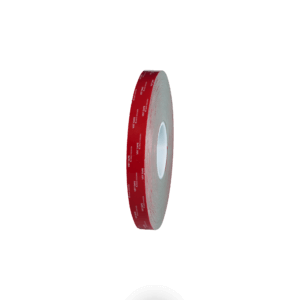

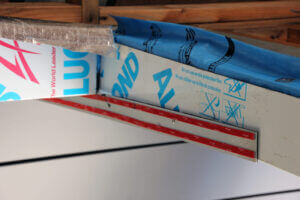
Our Range
| Product | Thickness | Length | Colour | Liner |
|---|---|---|---|---|
| A3110G | 1.10mm | 33m | Grey | Red Plastic |
| A3200G | 2.00mm | 16.5m | Grey | Red Plastic |
| A4050C | 0.50mm | 33m | Clear | Red Plastic |
| A4100C | 1.00mm | 33m | Clear | Red Plastic |
| A5110W | 1.10mm | 33m | White | Red Plastic |
| A5200W | 2.00mm | 16.5m | White | Red Plastic |
| A6080G | 0.80mm | 66m | Grey | Red Plastic |
| A8080G | 0.80mm | 66m | Grey | Green Plastic |
| A8110G | 1.10mm | 33m | Grey | Green Plastic |
| A8150G | 1.50mm | 30m | Grey | Green Plastic |
Comparison Table
| Husky Tape | 3M | Stylus | Tesa |
|---|---|---|---|
| A3110G | 4941 | 5311 | 7044 |
| A3200G | 4991 | 5320 | 7048 |
| A4050C | 4905 | 5405 | 7055 |
| A4100C | 4910 | 5410 | 7058 |
| A5110W | 5952WF | 5711 | 7044 |
| A5200W | – | 5720 | 7048 |
| A6080G | 4919 | – | – |
| A8080G | 5930P | 5608 | 7063 |
| A8110G | 5952P | 5611 | 7065 |
| A8150G | – | – | 7066 |
